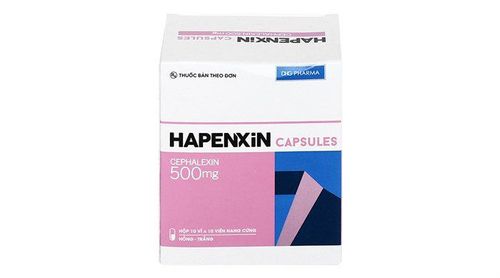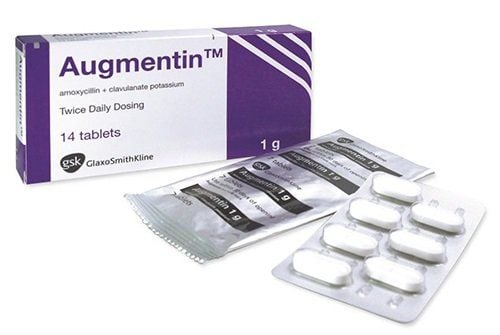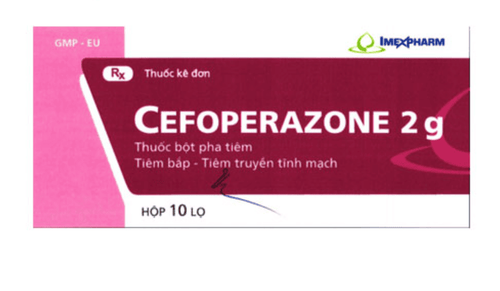This is an automatically translated article.
Goldoflo is used for infectious syndromes of invasive bacterial origin. Some patients may have contraindications to use, others may experience side effects when taking Goldoflo. You need to know the drug information even if this is a prescription drug so that you can timely prevent and prevent unwanted dangers.
1. Uses of the drug Goldoflo
Goldoflo is used to treat infections of various degrees. However, this is not the only anti-inflammatory drug, so the doctor will rely on the characteristics of the source of the infection to consider choosing a highly effective drug that ensures the best effect. The following is a list of a few bacteria that are highly susceptible to Goldoflo drugs and their ingredients in particular.
Respiratory tract infections Bacteria that cause ear, nose and throat disease Bacteria that damage the skin and soft tissues under the skin Bacteria that attack the genital tract Bacteria of the urinary system Gonorrhea Urethritis Cervicitis Infection or inflammation of the muscles bones and joints Gastrointestinal bacteria Biliary tract bacteria Blood infections This is a common sensitization case where Goldoflo is prescribed for treatment. In addition, the drug Goldoflo may appear to have some other uses that indirectly treat the disease. In other cases, the doctor will report back to you and advise on the specific pharmacology of the drug's mechanism of action so that the patient can safely use the drug.
2. Dosage and how to use Goldoflo
Goldoflo drug is used to treat by intravenous infusion. The drug can be packed in 10 packs of 40 ml each, so it needs to be diluted before intravenous infusion. The rate of drug mixing will be regulated by the medical organization. The doctor or nurse is the one who does this work, so you can be somewhat assured of their professional experience.
Dosage for patients with Goldoflo is recommended not to exceed 10 days. Therefore, each box of medicine can be equivalent to 1 course or 2 boxes of medicine per course depending on the number of infusions prescribed by the doctor.
The common infusion dose used in Goldoflo is 200-400mg each time. It can be used twice a day depending on the health condition. Normally, patients with renal failure whose ClCr index fluctuates in the range of 10-50 ml will only take the dose once a day. If renal failure with ClCr less than 10 ml will be considered to reduce to 100-200 mg once a day. Patients with cirrhosis are allowed to use up to 400mg / day, the number of times depending on the health of the doctor will consider accordingly.
3. Some notes when using Goldoflo
Goldoflo is not for use in children under 18 years of age. This is a contraindicated age group because of the danger of long-term development of the mechanism of action. In addition, pregnant or lactating women are also in the group of restricted drug use unless prescribed by a doctor's supervision and there is no other drug or better treatment method.
Patients who have been treated for convulsions or are at risk of disease should not use the drug. To determine if you are at risk for seizures or have a history of convulsions that are not suitable for the drug Goldoflo can be distinguished through the following signs of disease:
Severe and severe hardening of the arteries in the brain area Ever had Epilepsy Renal dysfunction The drug is anti-inflammatory but can cause allergic reactions or anaphylaxis in patients when used incorrectly. If you find that you are at risk of tendonitis or are allergic to the drug, you should inform your doctor so that other treatment options can be selected and the drug is stopped properly to avoid bodily dysfunction.
When infusion, the drug should be given a slow infusion mode to help the body slowly absorb the drug. The infusion time can be as long as 1 hour to make sure it's not too fast or too slow. During this time, the patient can rest and at the same time the body can adapt to the drug, especially the person receiving Goldoflo for the first time.
Goldoflo is prepared before infusion, so there is a possibility of reaction with the environment for improper storage. You need to pay attention to check the medicine before using to ensure that the new medicine is stored at the standard temperature. Also check the packaging carefully and make sure the medicine is still in its original packaging and has not been torn or deformed by physical impact.
4. Side effects of the drug Goldoflo
Nausea Difficulty sleeping Headache Headache Dizziness Digestive disorders Vomiting Itching Vaginitis Swelling after taking the drug Musculoskeletal pain Tendonitis Some side effects may be less common or rare. Even side effects depend on the patient's location and interactions are difficult to fully assess. Therefore, you need to pay attention to regular health check-ups to be able to closely evaluate the body indicators. If you have any unusual symptoms at your tests, tell your doctor so that you can have a plan to prevent side effects from occurring.
5. Interaction with the drug Goldoflo
The drug Goldoflo may appear to interact with the drug Theophylline and warfarin. You should avoid using drugs that have bad interactions with Goldoflo. In addition, when you are prescribed Goldoflo infusion, please provide enough information about the drugs you are using.
Above are the sharing for you what Goldoflo drug does. If you need more information, you can go to the hospital and ask your doctor for advice.
Please dial HOTLINE for more information or register for an appointment HERE. Download MyVinmec app to make appointments faster and to manage your bookings easily.













